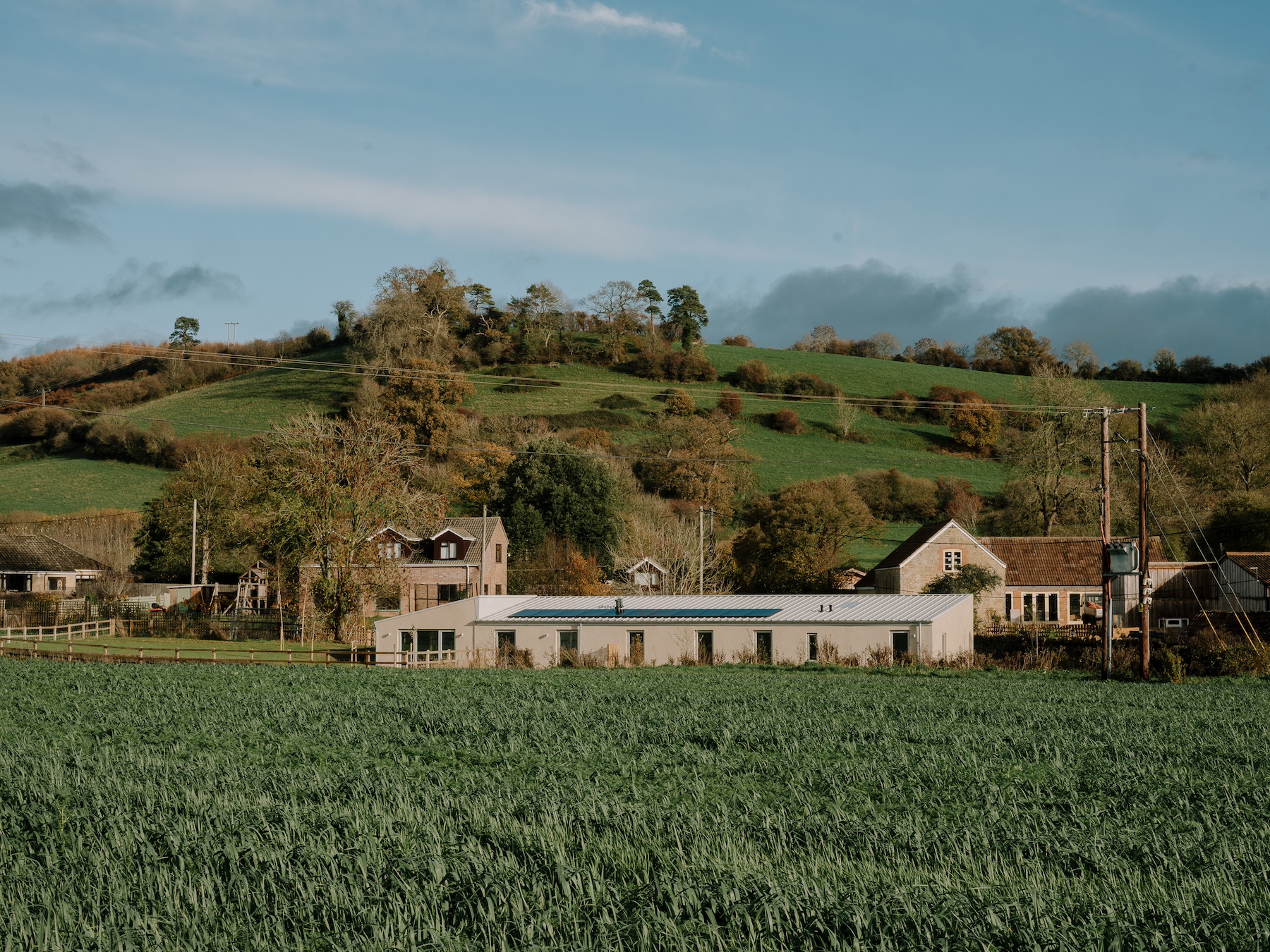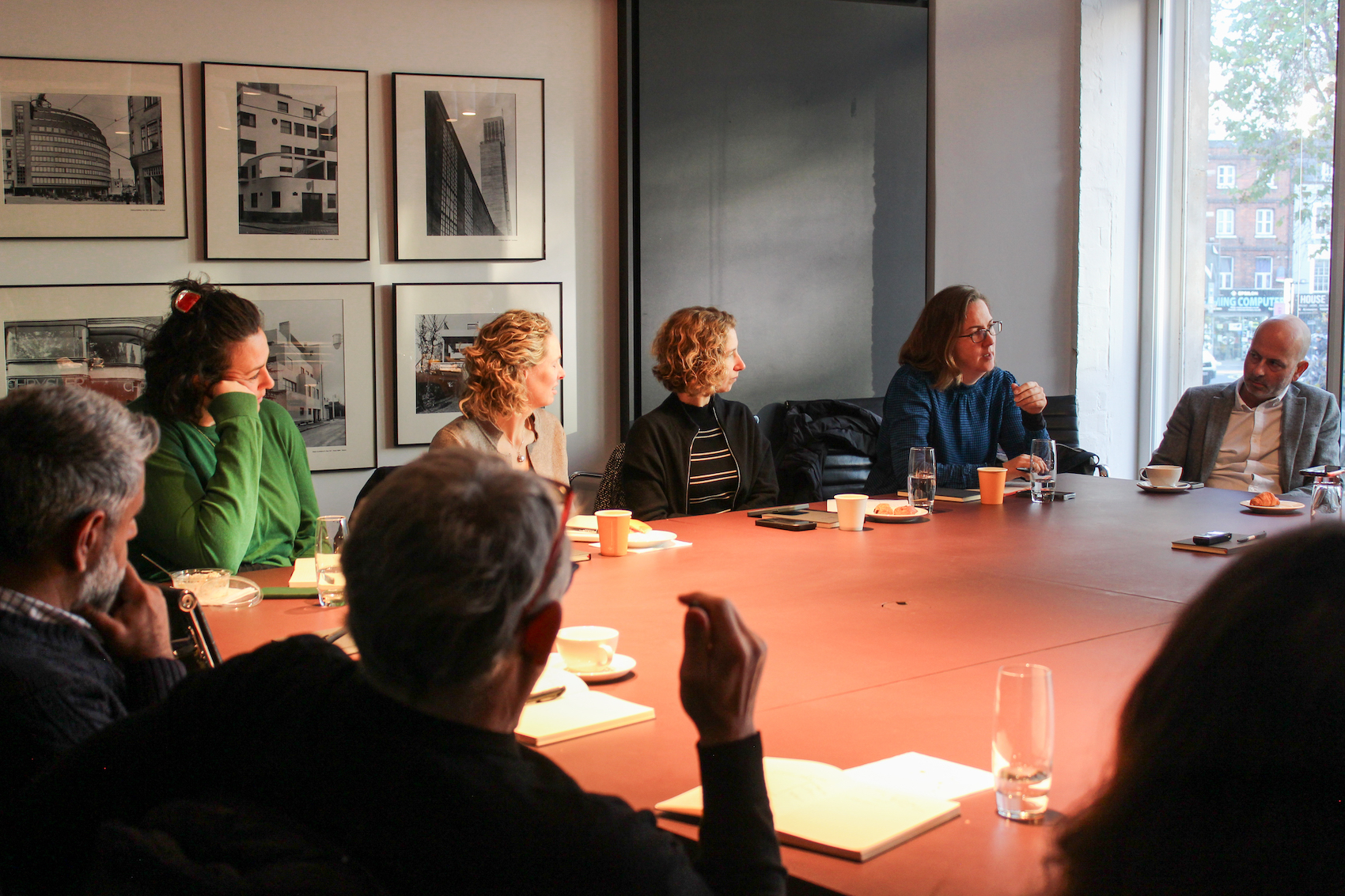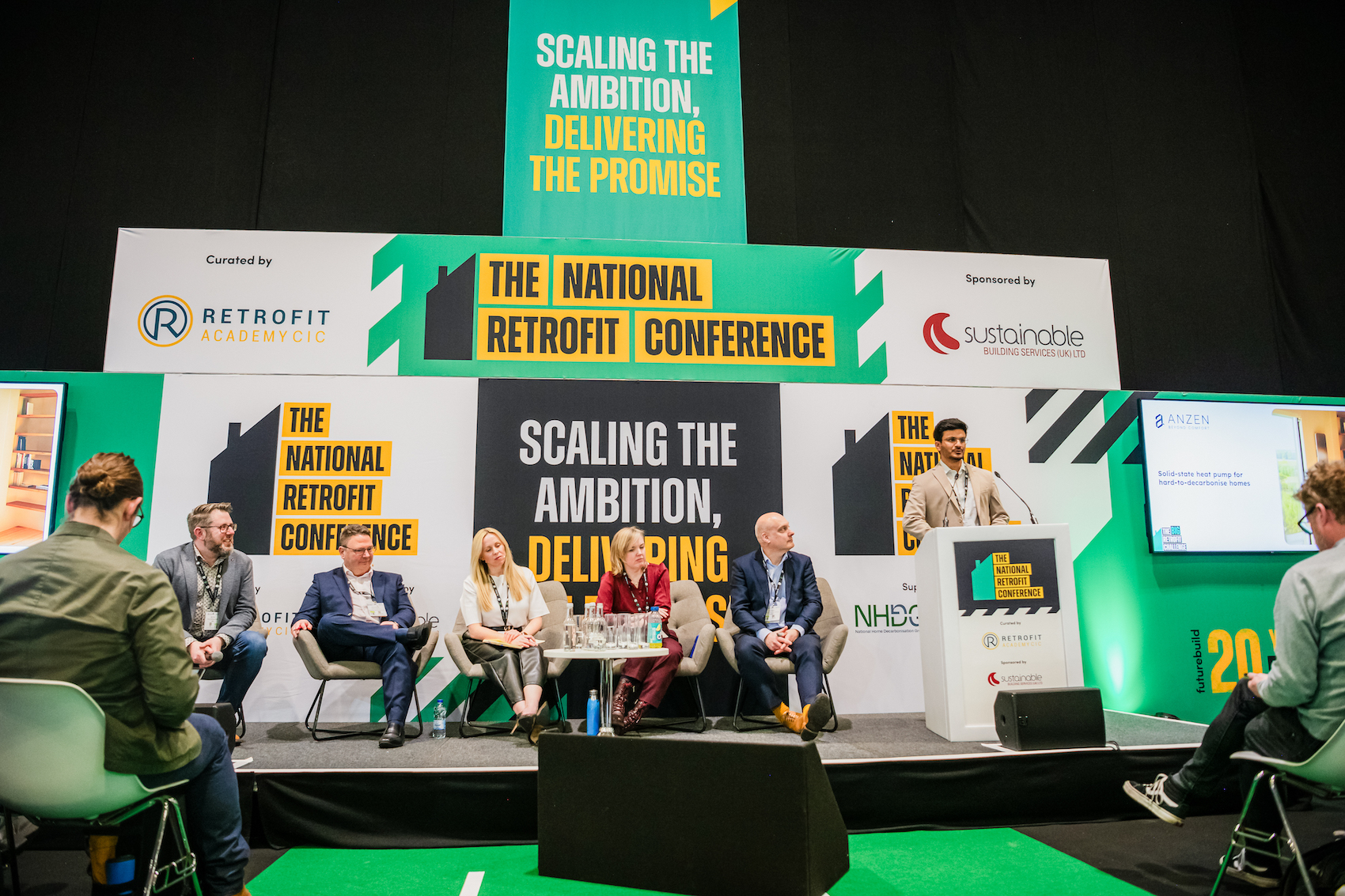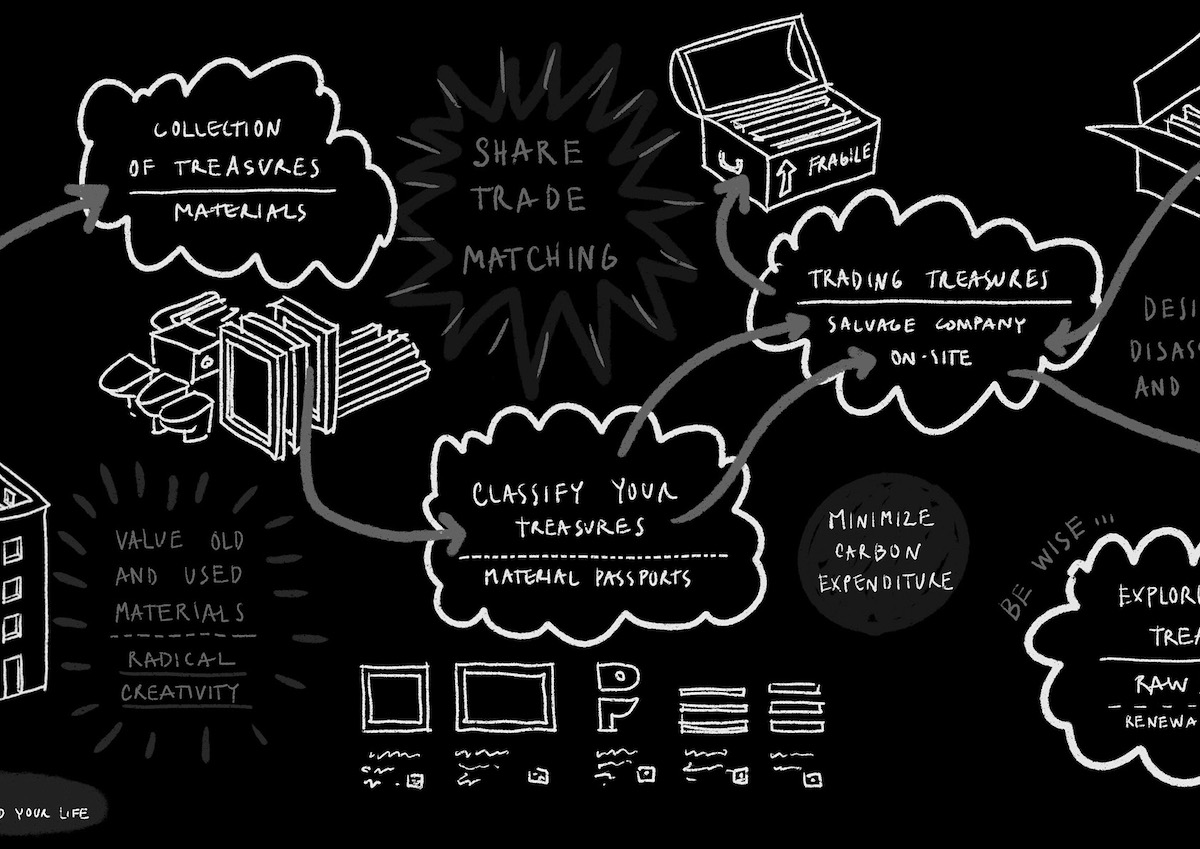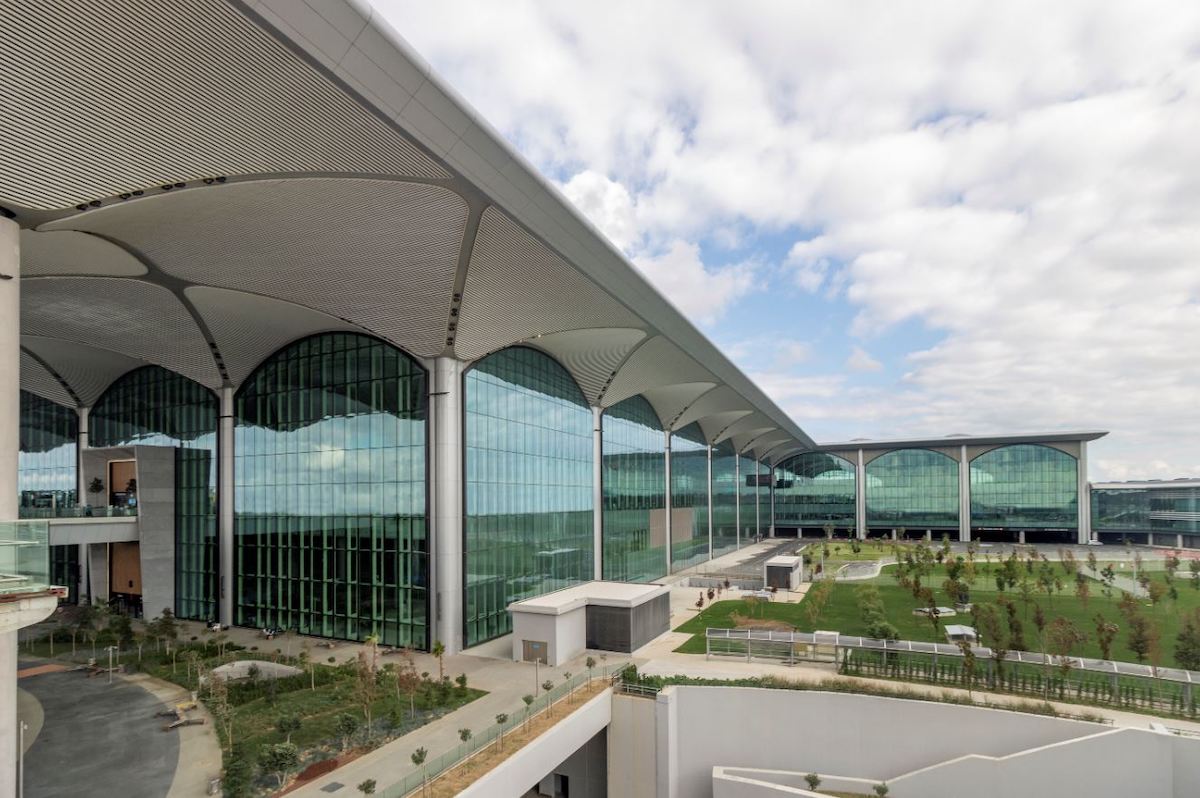Peter Fisher and Alexandra Francis discuss how the practice’s nuanced approach to sustainability balances material research and data analysis with storytelling and a resource-minimalist aesthetic.
Founded in 1987 by Rab and Denise Bennetts, Bennetts Associates is an award-winning, employee-owned practice with studios in London, Manchester and Edinburgh. Specialising in the office, culture and education sectors, the architect’s work frequently balances functionality with engagement, design rigour with humanity, and material richness with longevity. These values are underpinned by a longstanding and deeply-felt commitment to sustainability. B Corp certified in 2022 (with the highest score in the UK at the time), the practice was also the first in the world to achieve carbon neutrality via the United Nations Climate Neutral Now framework. Informed material selection and development play a key role in its evolutionary approach to sustainability, and are evidenced in part by its impressive physical and online materials libraries. But careful cataloguing and diligent research and data analysis are only part of the process, as director Peter Fisher and architect Alexandra Francis from the London office explain.
How do you organise and operate the materials libraries across your offices?
Alexandra Francis Each office has its own physical library which operates in parallel with an online library that can be accessed by everyone across the practice. Holly Baines in our Manchester office has been instrumental in creating the materials library. In our London office, Morgan Hone developed the database, with sustainability input from Harry Sumner.
A key element linking the physical libraries with the online resource in each office is a regularly reviewed ‘top table’ of preferred materials. Each physical product sample has its own specially created label, which gives a concise written and graphical overview of where it can be used, its relative cost, and its environmental impact. The label also includes a QR code, so staff members can connect to the detailed information and analysis of the product contained within the digital library.
Peter Fisher One of the main aims of this approach is to achieve consistency across the offices. What we want to avoid as a practice is an ever-expanding materials library. Instead, we’re actively trying to limit the number of materials we work with so we can explore and understand what we have in much more detail. The ‘top table’ is a combination of stuff that we’re currently using – our ‘business as usual materials’ – and stuff that we’re not using but are interested in. We’re also in the process of trying to ally our preferred materials and finishes to standard substrate details, because the environmental impact of substrates is often much more significant than the facing materials that go on top of them.
CLT by Stora Enso. “We’ve used CLT on a range of projects, including King’s Cross Sports Hall (2020), BEAM Hertford (2024), and Timber Square (2025), and are currently exploring ways of standardising it as a structural material across as many new schemes as possible.”
How are the libraries curated?
Alexandra Francis There are five or six of us directly involved with this, and we meet up regularly online to share information on new materials that team members have come across through general or project research. The business as usual materials Peter mentioned play an important role in the ongoing development of the library as they provide a benchmark for evaluating newer products. We’re also constantly on the lookout for product updates from manufacturers as these can be transformative from an environmental perspective. A recent case in point is a terrazzo-style floor finish made from waste wood chips. The manufacturer’s decision to change the product’s resin binder to a lower- impact alternative, made it much more environmentally conscious, and therefore more likely to be specified by us on a future project.
To what extent are material choices driven by environmental issues and research analysis?
Peter Fisher We’re cognisant of cost and other key factors, but really the driver for all the materials you see on this [top] table is sustainability. Of course the best thing we can do is to reuse the buildings we have and not put any finishes in them. But if we’ve got to have finishes, then the more sustainable the better. By analysing the environmental performance of materials we begin to put a different weight on the decisions we make. In other words, they’re no longer purely aesthetic. This is turn drives slightly different choices and decisions, so we may end up with buildings that are slightly quirkier or more characterful, and maybe richer materially.
Cork by Gencork. “The manufacturer of this expanded black cork employs digital manufacturing techniques to create three-dimensional forms and textures. We’re interested in using it to create highly insulating wall panels on future projects.”
Is it becoming easier to convince clients of the benefits of this approach?
Peter Fisher With clients like Landsec, where carbon is a key part of their agenda, we’ve been pushing against an open door. And certainly if you can find an alternative material that’s just as durable and cost effective, but also has a significant carbon story or narrative behind it, then you’ll find a much quicker ‘in’ than you would have done a few years ago.
I remember when recycled raised access floor tiles first began to come onto the market, and of course they looked dull and mismatched compared to shiny new ones. But as soon as you explained the difference in carbon terms between the two, clients and letting agents would begin to change their opinion from ‘shiny must be good’ to ‘dull is better’. In effect you’re giving a value to something that is beyond aesthetic opinion. Something unfamiliar may look a bit weird to start, but when you understand it better, it becomes part of the story and accepted.
Stone by The Stonemasonry Company. “The practice is actively pursuing structural stone on a number of projects, and we’re working with a range of experts, including The Stonemasonry Company, to produce component samples and 1:50 scale stone models.”
Do you strive to use locally-sourced materials where possible, and does this inform the overall design to a greater or lesser extent?
Alexandra Francis Generally, I would say we do as much as possible and it’s always a consideration. If we have to swap-out a specified material, we’ll try to match the travel distance or the overall embodied carbon of the original material. The online library includes a distance calculator so we can see how far away a project is from where a specific material or product is manufactured. Obviously we have to be realistic, because some of these materials aren’t going to come from factories in the UK or even close to the site. But we’re trying to be mindful of it.
Peter Fisher For some materials, such as stone, transport is the biggest impact, so the closer it is to site the better. But there are other materials where distance frankly doesn’t matter much. A constant question we get asked about CLT is: ‘surely it’s better to construct buildings of British concrete than Austrian timber?’ And the answer is that it’s overwhelmingly better to import timber from Austria in carbon terms. At Wessex Water Operations Centre in Bath (2001), the stone was sourced locally, but the glass was manufactured in Germany and then shipped to Sweden for the application of an energy-saving coating. But when you look at the environmental savings that occurred as a result of having the coating it was absolutely worth it. So it’s not a binary choice between local good, and not-local bad, it’s often much more nuanced than that.
Biochar by Restord. “Comprising around 95 per cent pure carbon, this is the UK’s first commercially available biochar. The practice is looking at ways of incorporating it into unfired clay bricks with the aim of creating construction products that contain captured carbon.”
How important are issues relating to reuse and recyclability when it comes to material selection?
Alexandra Francis We begin by looking at the lifespan of the material – there’s no point specifying something that’s only going to last for 10 years even if it has a low embodied carbon. Something with higher embodied carbon that lasts for 50 years could work out better in the long run, depending on the lifespan of the building. Cradle to cradle certification is also a key consideration for us. We’re increasingly trying to reuse products and materials within retrofit projects. This began in 2019 with Timber Square in London, which is due to complete later this year and is currently by volume set to be the UK’s largest CLT commercial development and has the tallest hybrid frame.
Peter Fisher This approach has really taken off in the Netherlands however, where demolition contractors have morphed into urban miners. Furthermore, there is an established product as service model in the Netherlands and Germany, particularly for MEP items. You don’t purchase a lift, for example, you purchase movement; so the lift remains in the ownership and care/ maintenance of the manufacturer. I think this approach has real appeal, and I can see it becoming more and more common within the construction industry.
Recycled plastic sheets by Smile Plastics. “Made from 100 per cent plastic, this tough yet visually appealing solid surface material is ideal for vanity and counter tops, and is fast becoming a go-to product for these kinds of applications.”
Is disassembly for reuse a priority in terms of the design process?
Alexandra Francis Yes, and we are applying it to both constructional systems, such as CLT, and internal finishes, such as ceramic tiles.
Peter Fisher There was a lovely bit in the competition brief from Landsec for Timber Square where it said ‘the design will prioritise reuse and biogenic materials, and shall have visible and reversible structural joints.’ It not only implies that they [Landsec] were asking for it [demountability], but that they understood what the aesthetic consequence of asking for it was. Nobody is going to turn up on site and say, “we don’t like bolts”; they’re there for a reason.
I think architecture is moving away from what you might call aesthetic minimalism where everything is hidden behind complex details, to a more genuine minimalism that is comparatively simple, rooted, and where you see the nuts and bolts of it. The aesthetic may be less pure and pedantic, but I think its richer and a more enjoyable. Demountability, durability, and longevity are all facets of sustainability, but overall it comes down to being more efficient and using stuff more sparingly and with more respect. ‘Less but better’ to quote Dieter Rams.
Timber terrazzo by Foresso. “We used this attractive wood-based terrazzo for tabletops at BEAM Hertford (2024). Not only is it made from waste wood sourced from felled British trees, it also incorporates an environmentally-friendly bio resin, as opposed to a synthetic one.”
How do you research and compare eco-credentials with different materials and construction systems?
Alexandra Francis We predominantly use EPDs, particularly when looking at finishes. On Timber Square, for example, we tried to only select finishes that had EPDs. In the online library, we drill down into the EPD data and separate it out to compare similar materials that might be used for the same purpose. It can be challenging, because not all materials have the same environmental stamps and certifications, but that doesn’t necessarily mean they’re better or worse products. It’s just that sometimes bigger manufacturers are able to get those certifications. So we try to ask manufacturers questions, and use our own judgment as well.
Peter Fisher There’s a danger that you can end up with too much environmental data on too many different areas, which can be confusing. It’s always worth remembering that there are basically three material sources: you can reuse it; you can grow it; or you can mine it/dig it up. And in terms of environmental impact it’s: mining bad, reusing good, and growing somewhere in between. There’s also the issue of carbon tunnel vision. But we find that a low-carbon product is usually pretty good in other areas, such as performance in use, biodiversity, embodied biodiversity, or embodied water. It’s not a guarantee, but it’s a fairly reasonable proxy.
Light earth straw block by HG Matthews. “The practice has become increasingly interested in unfired clay and straw as super-low carbon building materials. This product combines the two, creating a strong yet lightweight walling solution.”
How important are regenerative materials in terms of the practice’s approach to material selection?
Alexandra Francis They’ve become increasingly important in our library and on our projects. We’ve just completed the Robotics Living Lab at Manchester Fashion Institute, which uses modular straw walls.
Peter Fisher Prior to Timber Square, we’d done a few small-scale timber buildings. But if you were to wind the clock back 10 years and say to me that within a decade the practice would be designing a major commercial development using CLT, I would have thought you were being idealistic! And yet that’s where you end up. Which of today’s weird, wacky and unfeasible materials are going to be the mainstream materials of tomorrow? A lot of them won’t, but some of them will be.
And straw could be one of them?
Peter Fisher Well straw is amazing because it’s a short rotation crop, meaning that the carbon it sequesters was literally in the atmosphere last year. One of the criticisms or scepticisms about timber is whether or not you can count the sequestered carbon, because in some instances it was in the atmosphere 30, 40, or 50 years ago. We have enough straw to build 300,000 houses a year, and it’s literally sequestered carbon from what is often a waste material.
Mycelium flooring and acoustic panels by Mogu. “These mycelium-based products are incredibly sustainable and functional. From an aesthetic point of view, the flooring closely resembles lino, while the wall panels come in a range of beautiful shapes and colours.”
Are there any other materials or construction techniques that have caught your interest lately?
Peter Fisher We’re actively pursuing structural stone on a number of buildings at the moment, and have been working with people like Pierre Bidaud at The Stonemasonry Company and Hutton Stone in Northumberland, who are doing some very interesting stuff. Historically, as a practice, we’ve leant more towards the heavyweight tradition rather than the lightweight one. The appeal of stone is that if it’s augmented or post-tensioned it turns up on trucks in big panels and is then assembled – rather than made – on site. It’s proper DFMA. It’s also a dry trade and fully demountable. To me, that feels compliant with where our industry needs to go.
Alexandra Francis In terms of finishes, we’re really interested in mycelium due to its extremely low embodied carbon. Mogu produces a mycelium flooring product that closely resembles linoleum, as well as an acoustic material that is literally grown into different shapes and thicknesses. As always we are investigating practical issues, such as durability and maintenance, and weighing these against our business as usual products.











